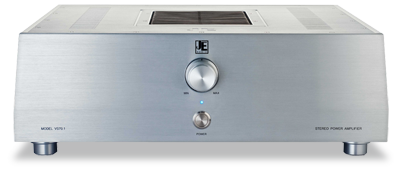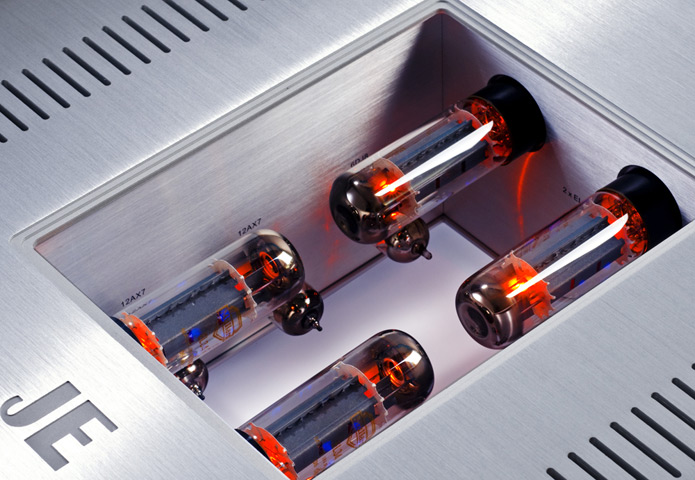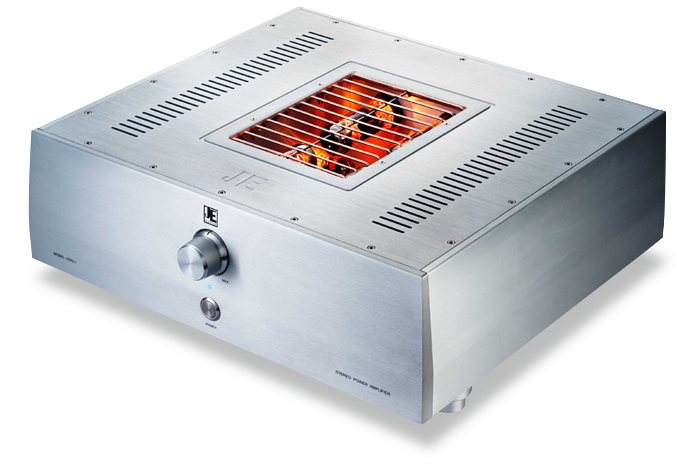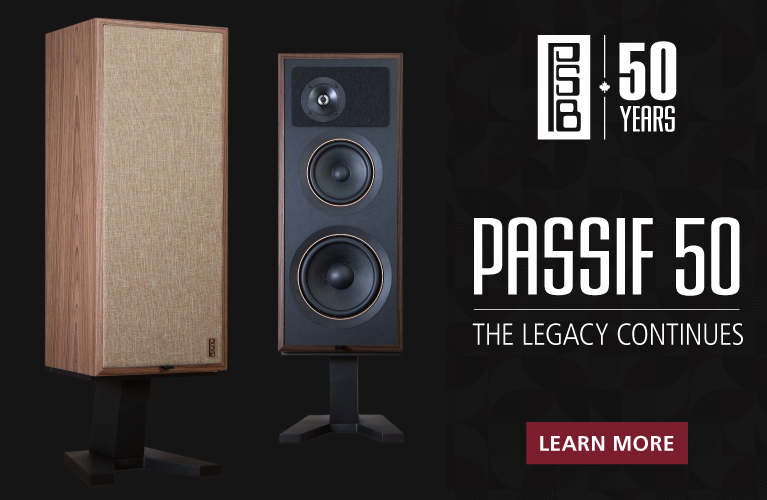Note: Measurements performed by BHK Labs can be found through this link.

 It’s increasingly common for US and European audio companies to design products in-house, then have them manufactured in China. That practice has produced some very good-sounding, reasonably priced audio gear, but it doesn’t mean that there are no competent Chinese designers. My first encounter with a 100% Chinese audio company was Opera Audio, which designs and makes a wide assortment of equipment that it sells under the Consonance brand. Over the years I’ve reviewed several of their models, including a pair of speakers I liked so much I bought them.
It’s increasingly common for US and European audio companies to design products in-house, then have them manufactured in China. That practice has produced some very good-sounding, reasonably priced audio gear, but it doesn’t mean that there are no competent Chinese designers. My first encounter with a 100% Chinese audio company was Opera Audio, which designs and makes a wide assortment of equipment that it sells under the Consonance brand. Over the years I’ve reviewed several of their models, including a pair of speakers I liked so much I bought them.
Nor is Opera the only Chinese company capable of designing good audio gear; JE Audio, based in Hong Kong, offers an assortment of amplifiers and preamplifiers with their own unique flavor. In our April 2009 issue I reviewed JE Audio’s VS70 stereo amplifier, whose excellent sound, unusually attractive looks, and bargain price won it a Reviewers’ Choice award. And in our May 1, 2011 edition, our notoriously hard-to-please publisher, Doug Schneider, gave a Reviewers’ Choice award to JE Audio’s VL10.1 preamplifier, which he described as "shockingly good."
JE Audio has updated the VS70, now called the VS70.1. Both versions use four KT77 tubes (EL34 substitutes) to produce a rated 35Wpc into 4 or 8 ohms, and both use circuits that are fully balanced right down to the output terminals. Tubes are used throughout the signal circuits; the power supply is solid-state.
The VS70.1 doesn’t look much different from the VS70 -- its silver, brushed-aluminum panels are machined so that the amplifier slightly tapers toward the top, like the base of a tall but greatly truncated pyramid. In both amps, the tubes are horizontally mounted in a central cavity. Open at top and bottom, the cavity serves as a chimney for a cooling flow of air. Some improvements, however, were obvious to the naked eye. The VS70.1 has a protective grille that covers the tube well. The bottom of the well is still open, which makes it easy to change tubes. Another welcome change was the on/off button, which has been moved to the front panel, directly below the master volume control. And the styling, which I found a bit gaudy in the VS70, is more tasteful in the VS70.1. The case of my review sample of the VS70 had had some rough areas, but the metalwork of the VS70.1 was flawless. A basic VS70.1 sells for $3000 USD, an $800 increase over the VS70. For $300 more, your VS70.1 can be shipped with Premium Gold Lion low-signal-level tubes, as was my review sample.

Besides the KT77 power tubes, each channel of the VS70.1 uses three small-signal tubes: two 12AX7s and one 6DJ8/6922. The small-signal tubes are mounted in the chimney under the output tubes, so that they’re not damaged by the heat rising from the KT77s. The mounting arrangement protects the tubes from damage from careless handling. I have sad memories of breaking off a tube in the socket of an amp whose tubes were mounted on the top of the case; the VS70.1’s design prevents that.
What’s new inside the VS70.1? In language that could have used a better translator, JE Audio’s website states that "The improvement includes: optimized amount of feedback using in [Dual Balanced Feedback Topology]; enhanced DC power filtering capacitance; redesigned of all PCBs and moved the power switch from the rear to the front panel. These improve sonic performance as well as operation convenience." To my nontechnical eyes, those didn’t sound like very substantial changes; I wondered if I’d hear any differences between the new and old versions.

The VS70.1’s rear panel has balanced and unbalanced inputs, selected with a toggle switch. To implement the VS70.1’s fully balanced circuit from input to output, the amp’s WBT-style speaker connectors have separate "+" and "-" terminals for each of the left and right 4- and 8-ohm connections. There is no common terminal, as is found on most amplifiers.
Many amplifier makers are content to use Home Depot-grade rubber feet, which has inspired an aftermarket industry in support devices from such firms as Stillpoints and Gingko Audio, both of which I use to good effect. Not so JE Audio, which provides three cylindrical feet of machined metal to isolate the VS70.1 from vibrations. Each foot has three feet of its own: small, soft half-domes. Like anything supported by a tripod, the VS70.1 never wobbled.
Setup
Believe it or not, I began by reading the well-written manual. (Well, the English half was well written; my Chinese is a bit weak.)
The VS70.1 had been shipped with its premium Gold Lion tubes already installed, something that always worries me a bit -- shipping can loosen or damage tubes. I know from experience that it’s no fun to unpack an amp whose box is littered with shards of broken glass. But the VS70.1’s sockets had held its tubes firmly in place. Nonetheless, I checked each tube to ensure that it was firmly seated and undamaged before I plugged the amp in and turned it on.
I placed the VS70.1 on the bottom shelf of my equipment rack, which has ample vertical clearance and good ventilation. After trying several different breeds from my cable stable, I chose Audience Au24 e balanced interconnects and Clarity speaker cables.
Unlike the VS70, the VS70.1 sounded good right out of the box, and continued to improve with further break-in. JE Audio specifies that the amplifier not be operated for more than four hours at a time, so break-in took longer than usual. If you’re giving a party and want the VS70.1 to provide your music, the dancing better not last longer than four hours.
I suspect that, like me, you toss most stock power cords in a drawer and instead use a big-bucks aftermarket cord; for me, the VS70.1’s lack of a stock cord was a plus. A Clarity Vortex cord worked well with the VS70.1.
I connected my Affirm Audio Lumination speakers, with their 16-ohm Feastrex drivers, to the VS70.1’s 8-ohm taps. Many, if not most, of today’s audio systems have only a single source component, so I connected my Audio Research DAC8 directly to the VS70.1’s inputs (XLR and RCA are provided). The combination of the DAC8’s very high output and the VS70.1’s high input sensitivity (0.5V balanced) reduced the useful range of the VS70.1's volume control to about 10 degrees. (Current-production DAC8s have a lower output level.) To evaluate the VS70.1’s bass performance, I disconnected my subwoofers.
Sound
I could easily hear differences between the VS70.1 and the VS70. The new model’s sound was very dynamic and highly resolved. One of the first albums I played was Gregorio Paniagua and the Atrium Musicae de Madrid’s La Folia de la Spagna, in a remastered edition (16/44.1 FLAC, JVC) ripped to my server. This recording was first issued 30 years ago on a phenomenally open-sounding LP from French Harmonia Mundi, and JVC’s XR24 reissue does justice to the original. If you think classical music is stuffy and pretentious, this album might convince you otherwise; among its unusual features are a recording of a lawnmower and a thankfully brief "Turkey in the Straw." When I first heard the lawnmower, I was convinced that my lawn-care service had arrived, so realistic was the sound. But however entertaining the sound effects, what’s important is the music, and the VS70.1 delivered it.
Another favorite of mine is "Folia Rodrigo Martinez," from La Folia 1490-1701 (16/44.1 FLAC, Alia Vox), performed by Jordi Savall and his band. The music dates from 1491 and is played here on period instruments; the recording has a high density of sonic information. The dynamic range is substantial, and a collection of percussion instruments provides a shimmering backdrop for the viola da gamba, baroque guitar, and harp, which carry the melody and counterpoint. What sounds like a big bass drum provides a foundation that extends down into the mid-20Hz octave. The VS70.1 didn’t go quite as low as the best amplifiers I’ve tried, but it had a lot of bass impact that I could feel at my listening couch, 10’ from the speakers. One characteristic was audible with every recording I tried: the VS70.1’s especially strong and fast definition of leading-edge transients throughout the audioband. However, there was none of the edginess that results from overemphasized transients -- just a lot of detail and definition. Some tube amps round off the leading edges of transients; the VS70.1 didn’t.

In Chris Jones’s "God Moves on the Water," from his Roadhouses and Automobiles (16/44.1 FLAC, Stockfisch), the bass guitar that opens the piece lacked neither extension nor slam. Jones’s voice was fully fleshed out, which made his words easy to understand.
The opening bass figures in the audiophile favorite "Spanish Harlem," from Rebecca Pidgeon’s The Raven (24/176.4, Chesky/HDtracks), were also strong and better defined than through many amplifiers I’ve tried. Pidgeon’s soprano voice had tons of texture; the nuances that make this recording sound realistic were plentiful -- no question who was singing!
To evaluate the VS70.1’s high-frequency extension, I cued up Dominick Argento’s "For the Angel, Israfel," performed by Eiji Oue and the Minnesota Orchestra on Reference Recordings’ 30th Anniversary Sampler (16/44.1 FLAC, Reference). The delicate, high-pitched chimes that open the piece at a very low level were clearly audible; some amplifiers roll these off, making them hard to hear.
I then played my usual test of soundstaging: the Tallis Scholars’ recording of Allegri’s Miserere (24/96, Gimell). Appropriately for a recording made in a church, this has tremendous depth, but the VS70.1 also depicted the width of the recording venue unusually well. I’d always thought that reviewers who wrote about being able to "hear the corners of a stage" were blowing smoke, but darned if the VS70.1 didn’t illuminate the corners of this sanctuary. I’m not sure how important that was to the music, but there it was.
Comparison
The Atma-Sphere S-30 Mk III is a class-A stereo amplifier that uses 6SG7 triodes as output tubes to produce 30Wpc into 8 ohms. Unlike most tube amps (and the VS70.1), it has no output transformers. Like the VS70.1, it’s fully balanced and includes single-ended inputs. With "Folia Rodrigo Martinez," the Atma-Sphere showed how output transformers can limit bass. The VS70.1 did little such limiting, but the Atma-Sphere combined seemingly limitless bass depth with bass tunefulness. By tunefulness I mean that its bass was part of the overall musical structure, with none of the dried-up sound I often hear from solid-state amps. Overall, there was a directness, a transparency that comes from coupling the output tubes directly to the speaker. (Well, OK, not directly -- there were speaker cables in between.) Dynamics were also finely graduated. But above the bass the VS70.1 gave up nothing, essentially matching the performance of the Atma-Sphere S-30 Mk III in this region. This is a challenging recording; the fact that these two amps demonstrated roughly equal performance was a testament to the VS70.1’s design. (In 2007, when I reviewed it, the Atma-Sphere cost precisely as much as VS70.1 costs now: $3300.)
With Chris Jones’s "God Moves on the Water," the Atma-Sphere’s bass was deeper and more impactful, but only very slightly so. If I weren’t critically comparing these amplifiers, I would probably regard their bass performances as a wash -- except in the deepest bass.
In "Spanish Harlem," Rebecca Pidgeon’s voice had a reach-out-and-touch-it quality through the Atma-Sphere that was downright eerie. Without sounding even slightly etched, the Atma-Sphere missed very little detail. Both amps did this well, but the Atma-Sphere was ever so slightly more detailed.
Playing Argento’s "For the Angel, Israfel," I expected the Atma-Sphere’s absence of output transformers to give it the lead in the reproduction of the highs. However, the VS70.1 was its equal -- a tribute to the quality of its output transformers. With Allegri’s Miserere, the Atma-Sphere displayed a spacious and well-defined soundstage, but that stage was even more precisely and clearly defined through the VS70.1. I slightly preferred the JE Audio’s depiction of voices as well.
Not many amps have visited my system that have been the equal of the S-30 Mk III, but the VS70.1 was in many ways, and in some areas outdid the Atma-Sphere. However, I don’t have the latest version of the Atma-Sphere, the S-30 Mk III.1, whose input circuit is claimed to produce 90% less distortion -- which could well have made a difference in this comparison.
Conclusions
Like its VS70, JE Audio’s VS70.1 offers an attractive set of features: excellent sound, gorgeous looks, and a fair price. While the VS70 offered the same attractions, almost everything about the VS70.1 is a clear improvement on them. It sounds better, looks better, and its price -- well, that’s not better, but it’s still very good value for this level of performance. If you’re at all interested in a medium-powered tube amplifier, I urge you to check out the JE Audio VS70.1.
. . . Vade Forrester
vadef@soundstagenetwork.com
Associated Equipment
- Speakers -- Affirm Audio Lumination
- Amplifiers -- Audio Research VS115, Atma-Sphere S-30 Mk III, Art Audio PX-25
- Preamplifier -- Audio Research PH5 phono preamplifier and LS27 line stage
- Analog sources -- Linn LP12 turntable on custom isolation base, Graham 2.2 tonearm, van den Hul Platinum Frog cartridge
- Digital sources -- Meridian 500 CD transport, Sony SCD-XA5400ES SACD/CD player; Hewlett-Packard dv7-3188cl laptop computer running 64-bit Windows 7 Home Premium and foobar2000 music server v.1.1.7; Auraliti PK100 music player; all servers and digital players connected to an Audio Research DAC8 D/A converter
- Digital cables -- AudioQuest Diamond USB; Wireworld Starlight 52 USB, Gold Starlight 6 S/PDIF, Gold Starlight 5 AES/EBU
- Interconnects -- Audience Au24 e, Clarity Cables Organic, Crystal Cable Piccolo, Purist Audio Design Venustas, TG Audio High Purity Revised
- Speaker cables -- Audience Au24 e, Blue Marble, Clarity Cables Organic, Crystal Cables CrystalSpeak Micro, Purist Audio Design Venustas
- Power cords -- Audience powerChord e, Blue Marble Blue Lightning, Clarity Cables Vortex, Purist Audio Design Venustas
- Power conditioners and distribution -- Audience aR6-T, IsoTek EVO3 Sirius
JE Audio VS70.1 Stereo Amplifier
Price: $3000.00 USD, $3300.00 with Gold Lion small-signal tubes.
Warranty: Three years parts and labor; 90 days, tubes.
JE Audio
Unit L, 5/F, Block 1
International Industrial Center
2-8 Kwei Tei Street
Fotan, Shatin
Hong Kong
Phone: (852) 3543-0973
Website: www.je-audio.com
North American distributor:
Worldwide Wholesales
Robert Neill
Phone: (519) 619-9924






















